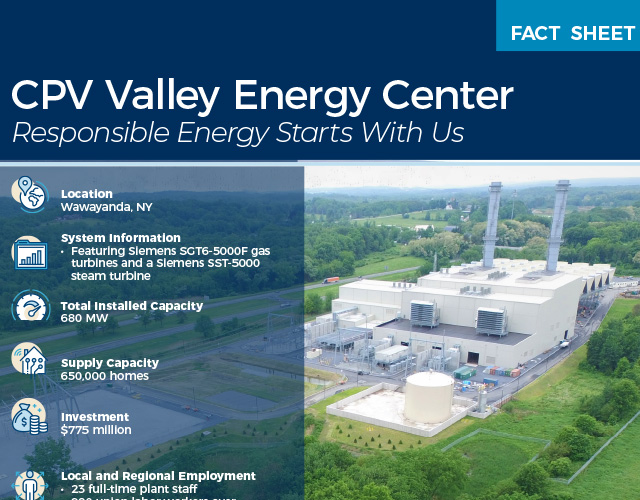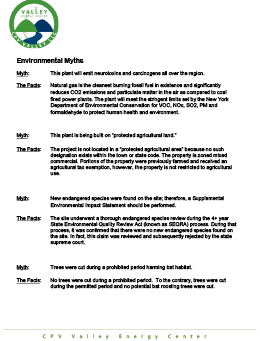
Environmental Benefits
CPV Valley will be one of the cleanest generators in the state with best-in-class efficiency and state-of-the-art emissions control technologies, assisting New York in its continual air quality improvement efforts.
Key Environmental Benefits
Lower Carbon Emissions
New York State is leading efforts to lower greenhouse gas emissions significantly by 2030. Transitioning to lower emitting resources like CPV Valley will play a significant role in the blueprint for emissions reductions. CPV Valley’s highly efficient design allows for more electricity production with less natural gas consumption. Because CPV Valley’s electric production displaces electric production from older, less efficient generators, CPV Valley will reduce net carbon emissions. An independent study conducted by The Brattle Group, determined that new, efficient power generation in the Lower Hudson Valley, such as the CPV Valley Energy Center, will reduce carbon emissions by half-a-million tons per year. That represents 6 million tons of total carbon emissions reductions between 2018 and 2030.
Recycled Greywater
CPV Valley will repurpose wastewater discharged from the City of Middletown’s wastewater treatment facility for a productive use as process water within the plant, which eliminates the use of potable water in the electric production process.
Air Cooled
The 36-cell air-cooled condenser will minimize water consumption to approximately 230 thousand gallons per day compared to 2.5-to- 5 million gallons per day for non-air- cooled technology.
Emissions Reductions Explained
We’ve seen a lot of false information out there stating that the CPV Valley Energy Center will increase carbon emissions in New York. This is simply not true. The confusion on this topic likely comes from a flawed understanding of how the electric system works.
First, Let’s Consider How Electric Generators Supply Electricity To Meet The Electric Demand Of Consumers In New York.
To fulfill demand, the NY Independent System Operator (NYISO) dispatches electric generators in order of efficiency and cost-effectiveness, starting with the most efficient generator first and the least efficient generator last, until demand is fully met.
As a highly-efficient, low-emitting, and state-of- the-art facility, CPV Valley will be one of the first generators in line to get dispatched. This means that when CPV Valley is online, an older, less-efficient and most importantly, higher-emitting, generator elsewhere in the state will be offline.
As an analogy, when a consumer buys a new car with improved gas mileage to replace an old clunker, they don’t then proceed to drive two cars at once. Instead, they begin to use the new car and the old car either gets left at home, or heads to the junk yard. The electric system is no different.
Next, Let’s Talk About Efficiency And How It Translates Into Emissions Reductions.
We talk a lot about the efficiency of our energy centers. We can’t help it, we’re engineers. However, it is important for consumers to understand why efficiency is so important and how it factors into the potential for emissions reductions. At its core, high efficiency means the ability to do more with less. In the car analogy, the new car gets better gas mileage than the older clunker simply because it can use fuel more efficiently. By using less fuel to travel the same distance, the new car has lower emissions than the older clunker, and is therefore beneficial to the environment. This also means less fuel will have to be extracted and transported to support our power needs.
The CPV Valley Energy Center will be one of the most efficient generators in the nation because of its ability to produce electricity while using less fuel. Because CPV Valley will ultimately operate in place of, and not in addition to, older and less-efficient generators elsewhere in the state, less fuel will be used and overall emissions will be reduced. Independent studies have estimated this effect will reduce emissions in NY by over a half-a-million tons of CO2 annually and six million total tons by 2030.
It should be clear now that statements implying that the CPV Valley Energy Center will increase overall emissions are simply not accurate and have been categorically discredited through extensive analysis.
LEARN MORE ABOUT VALLEY ENERGY CENTER
[wpgmza id=”9″]



